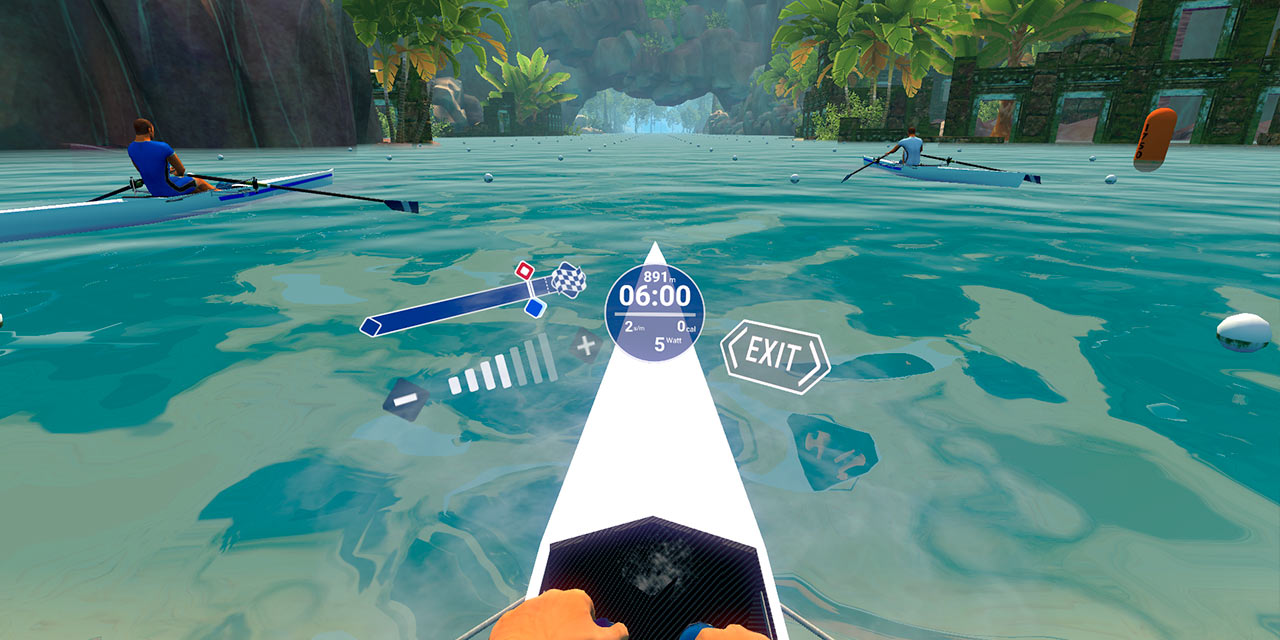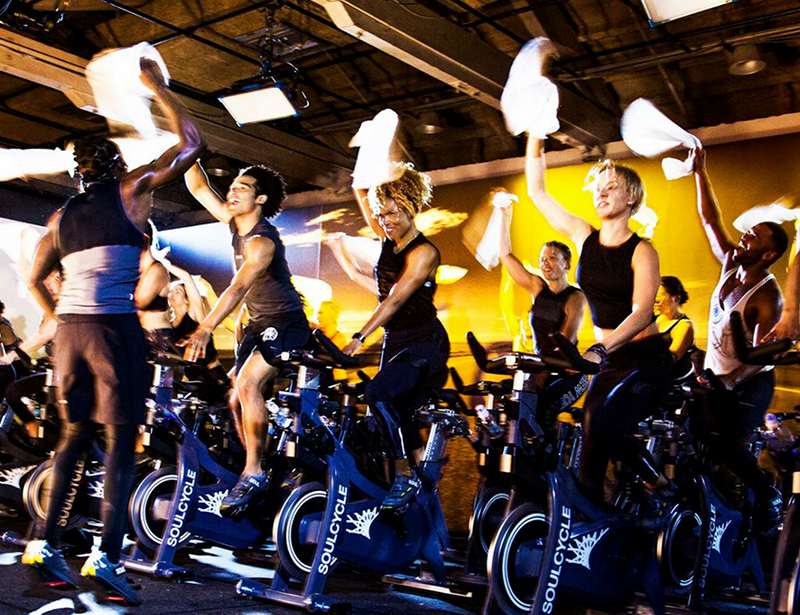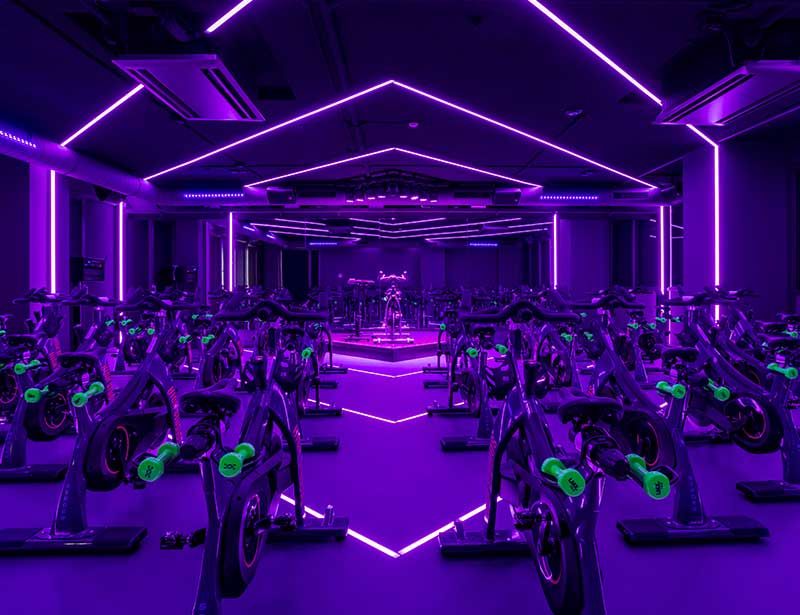Fitness Technology
Fitness, reinvented
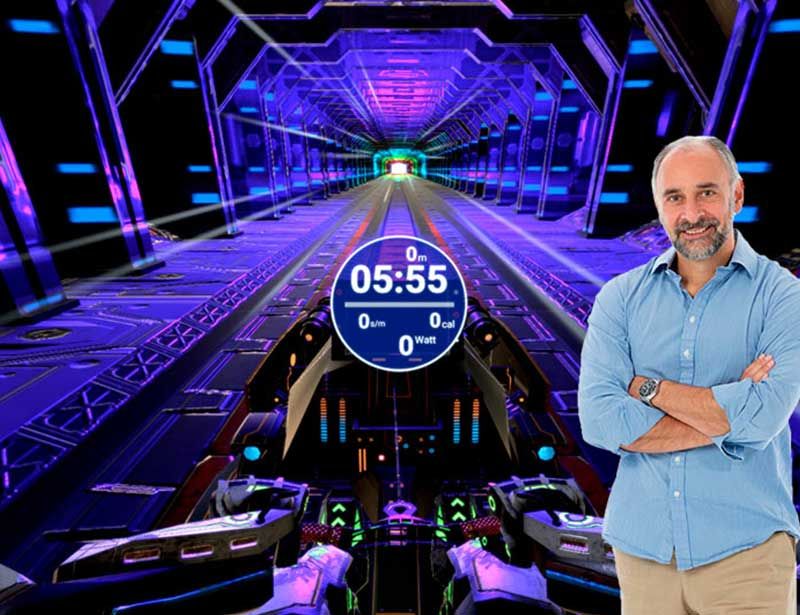
What is your mission as a company?
Holodia’s vision statement is ‘fitness reinvented’. Specifically, our goal is to change the way the global sector delivers fitness – and with it the way people experience it – through the use of mixed reality technology.
Our focus is predominantly on VR – virtual reality – through our HOLOFIT brand. But importantly, we are not a gaming company. We’re a fitness company.
Neither are we a hardware company – we can’t compete with the R&D budgets of the big consumer brands: Oculus, HTC, Samsung, Lenovo and so on. We’re a software company, and our expertise in both fitness and software allow us to deliver new and amazing experiences to exercisers.
What is HOLOFIT, and who is the target market?
HOLOFIT is the most advanced VR fitness platform on the market.
Our primary audience thus far has been the B2B market: gyms and fitness facilities. Why? Because it takes time for new technology such as ours to gain a foothold in the consumer market. People first have to understand how the technology makes their lives better, different, more fun. We’re reaching that point now – we’ve seen VR sales growing fast over the last few quarters – so the time is now right to reach out to consumers too. We launched a fitness solution that’s suitable for home use in July of this year.
But we still have a strong focus on the B2B market. Our goal is to help gym operators solve some of their bigger problems around member engagement and retention, as well as helping them reach and attract new audiences. Crucially, we don’t see ourselves as disruptors. We’re there to help the fitness sector transform itself, and thereby strengthen its position, by embracing digital technology.
We’re also there to help gyms deliver against consumer expectations: the desire for fitness to be an experience; the desire for personal choice in how you train; and the desire to socially interact while you exercise.
So, how does HOLOFIT work?
HOLOFIT’s virtual reality software runs through a VR headset worn by the exerciser, with two versions available: HOLOFIT PRO and HOLOFIT GO.
Both offer a variety of content – what we call ‘tracks’ – to ensure personal choice in training style, workout mode and environment. And both deliver social interaction through functionality such as competitions, leaderboards and multi-player mode.
HOLOFIT PRO is designed for a dedicated VR CV zone on a gym floor: a powerful system that allows for premium visual quality. With content driven from an external, VR-ready computer, and as a wired solution, there’s no down-time: the headsets are continually charged and ready to use. It also comes with more content than HOLOFIT GO – around 120 tracks, which are regularly updated – and is priced at around €2,100 for the hardware, plus €99 per headset per month for the software and content.
HOLOFIT GO launched at the beginning of July: a wireless option that connects to compatible fitness equipment via Bluetooth. With all content stored in the headset itself, it’s a true ‘plug and play’ product for a flexible VR offering, whether in the group exercise studio, at home or on the gym floor – perfect for clubs that might not have the space or budget for a dedicated VR zone. The price tag is very different too: €850 is the retail price for the headset, plus €9.90 a month for the subscription.
The user experience of both models is highly intuitive. You simply navigate the options in the menu – avatar, training mode, track, group/individual – through your eyes, by looking at the relevant option, then start exercising in an immersive virtual world. It’s as simple as that.
even on tough cardio equipment, those using holofit keep going 2.3 times longer
What types of fitness equipment is HOLOFIT compatible with?
At the moment, HOLOFIT is only designed for use on CV equipment, but within that category we’re hardware agnostic, compatible with all major equipment brands and all types of cardio fitness equipment. I would go so far as to say HOLOFIT is the only multisport VR fitness product in the world.
That said, we focus primarily on rowers, indoor bikes and ellipticals/steppers, each of which have their own specially designed content tracks. When you look down at your avatar, they’ll be doing the same form of movement as you – rowing, cycling, running or walking.
Although technically you could use a VR headset on a treadmill, for safety reasons – you aren’t holding on to anything on a treadmill, so with a headset on you might trip – we don’t yet offer this commercially. Headsets will evolve in the future to include a small see-through membrane, and at that point treadmills will be an option, but for now we focus on ellipticals; in a VR world, using an elliptical feels like running anyway, especially if it’s on equipment like Octane’s Zero Runner.
We’re already working closely with a large number of leading suppliers – from Core Health & Fitness to Matrix, Body Bike to Concept2 – because interestingly, what HOLOFIT does is move things on when it comes to CV equipment. At the moment, the price of CV equipment is driven largely by the sophistication of the console, but when you have VR it’s no longer about the integrated screen. The combination of user + headset effectively becomes the console: the content, the experience, the social interaction, the competition, the coaching, the heart rate monitoring… it’s all done via software through the VR headset. This is an interesting shift in perspective for both operators and suppliers.
Can you use HOLOFIT with any VR headset?
Our software is compatible with most models of VR headset, but we currently recommend HTC Vive or Oculus – as I say, we aren’t hardware manufacturers, so we don’t make our own VR headsets.
That said, although we’re in continual conversations with the various manufacturers to ensure their products meet our high-spec requirements, we’re still waiting for the hardware to catch up with what we want to do – what our software could already do. With that in mind, I wouldn’t rule out creating our own HOLOFIT headset in the future.
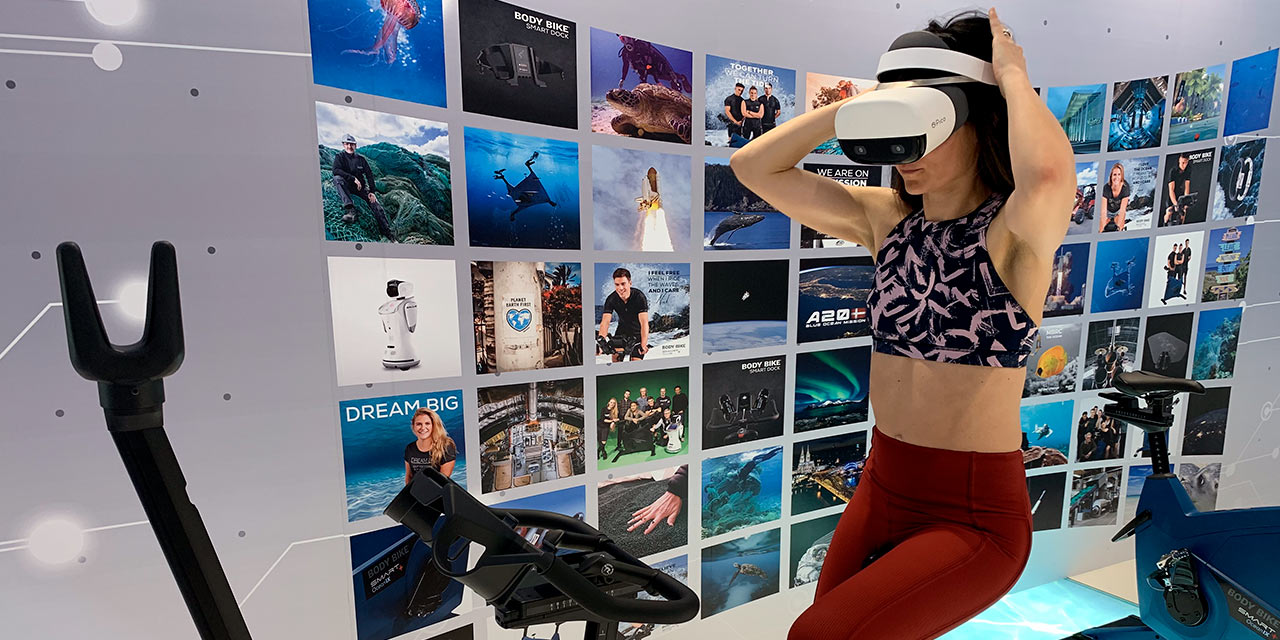
How are gyms currently using HOLOFIT?
To date, although we’re working with the likes of Anytime Fitness in the US, our focus has mostly been on smaller chains and independents where there’s more flexibility to test new concepts. We’re generally seeing clubs invest in between two and eight headsets, which are then used to monetise the gym floor, either by selling premium membership add-ons or pay as you go usage.
But we are now seeing interest grow among the bigger operators. One interesting concept is currently being trialled at Pure Gym and Basefit in the UK, in collaboration with Matrix Fitness, and at Corefit in Italy. Each operator has selected a club where they’ve created a VR Innovation Zone featuring five or six ellipticals, each with their own VR headset. These zones are running 15-minute ‘HOLOFIT Track’ interval training programmes, with the option to either timetable them so everyone starts together – members can then compete against each other, either in-club or inter-club – or, during off-peak times, make the programme available for people to drop in whenever a station becomes free.
It’s a great way of creating an engaging experience for members and monetising the gym floor, while at the same time limiting the workout to 15 minutes – our research shows that, even on tough pieces of equipment like Concept2 rowing machines, those using HOLOFIT are happy to keep going for 2.3 times longer than without it!
Finally, what we’re also seeing emerge – especially in markets like Japan, but also in Europe – are VR-only gyms. It’s still a niche area, but it’s very interesting.
What’s your model for the home fitness space?
We sell HOLOFIT GO for home use, but here our mission is different: it’s about making it easier and more fun to exercise at home.
Sitting on an exercise bike in your spare room can be uninspiring; HOLOFIT allows you to escape this boring environment, transporting you to a parallel, virtual universe. It adds a whole new dimension to radically transform the at-home fitness experience.
gyms have a choice: meet customer demand yourselves, or allow ‘bring your own device’
What are HOLOFIT’s USPs?
First and foremost, it’s the fact that we don’t just do VR. We understand VR. That’s an important distinction. Our tech team has been working in VR for around 15 years, going back to the days when a headset cost US$60,000. They specialise in the way VR technology interacts with the human brain: what works, what doesn’t, what motivates people. This is one of our USPs, and what ultimately sets those who succeed in VR apart from those who simply ‘do’ VR.
Another USP is that we’ve solved the issue of motion sickness while using VR, or at least dramatically reduced it, which all revolves around the quality of the content. We have a patent pending on this.
I also believe we have strong USPs if we look beyond VR and into the broader fitness sector.
For example, where most of the digital solutions on the market involve following a class on a big screen – but still in the environment of a group exercise studio – HOLOFIT changes the game by fully immersing people in a VR environment. It totally changes the experience.
What’s in your development pipeline?
In about three months’ time, we expect to launch a solution where you download and run HOLOFIT software through your mobile phone, clipping this into a head mount. It won’t yet offer the same quality as a proper VR headset though, because we’re waiting for the mobile phone technology – the graphics chips in phones – to catch up. That will take probably 12 to 18 months.
In fact, we’re often waiting for other technologies to catch up with what we want to be able to do! We could already create a wireless version of HOLOFIT PRO for group exercise studios, for example, but at the moment it still costs too much to run graphics through the cloud. We really need 5G for this, so I suspect it will take two years even in the fastest-developing markets to deliver this cost-effectively.
However, we don’t always run as fast as we can when it comes to product development. There’s a lot of talk about AI, for example, but we don’t believe this really exists at the moment – what exists so far are machine learning algorithms – which is why we’re happy to keep the virtual coaching in HOLOFIT quite simple for now. It’s learning and growing every day from our user data, but true AI needs a lot of data. You can’t base personalised recommendations on a handful of workouts, because such data will inevitably be skewed. We’re happy to leave this element of what we do in its infancy until we’re confident we have enough user data to understand real VR usage trends.
In the meantime, other areas we’ll be developing include VR options for weight training as well as CV equipment, and AR (augmented reality) for outdoor use. We see little application for AR indoors, where there’s far more benefit in escaping the normal – often less engaging – exercise environment altogether. But outdoors, where VR has little relevance, AR can add excitement and interaction with the world around you. That said, we still expect VR to be a thousand times bigger than AR.
We’re also exploring ways to better connect fitness with other aspects of people’s lives, because it isn’t – or shouldn’t – be an isolated activity. Within the next 12 months, you’ll be able to collect trophies while training on HOLOFIT, picking them up along the way; these will then have a monetary value in the real world, redeemable against things like workout apparel.
We may also open up to third party VR content providers in the future, provided they can create content that meets our exacting standards.
indoor cycling will have to become a lot more immersive than it is today and delivered in a far more flexible way
What do you see as the future of fitness –
and cycling specifically?
Our research shows that 70 per cent of all HOLOFIT users become regulars. This is the future. We will all have at least one VR headset in our homes. Gyms therefore have a choice: meet customer demand yourselves, or allow BYOD – bring your own device.
And indoor cycling specifically? I’m excited by the way VR could democratise this activity. I envisage small group training classes on the gym floor, opening group cycling up to anyone too intimidated to join a class full of uber-fit regulars. I envisage people using VR on their own too, not only on Spin bikes but also on more accessible models such as recumbents.
Over-arching all of this, indoor cycling will have to become a lot more immersive than it is today, and delivered in a far more flexible way. That means moving away from a fixed format – a reliance on cycling studios, external screens and live instructors – towards technology that allows for a differentiated, engaging, motivational, fun, personalised experience… because this is the experience consumers now expect.
Video

Conceived, powered and funded by BODY BIKE®, RIDE HIGH has a simple mission: to celebrate and champion the very best of indoor cycling, sharing ideas, stories and experiences from around the world to inspire the sector on to even bigger and better things. Subscribe for free by leaving your details below and we'll send indoor cycling's hottest news direct to your inbox three times a year.

